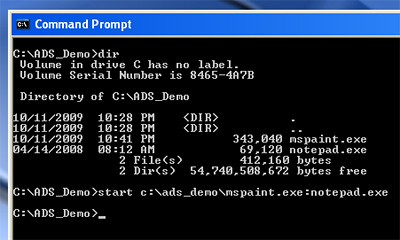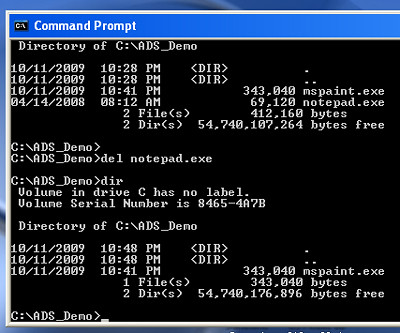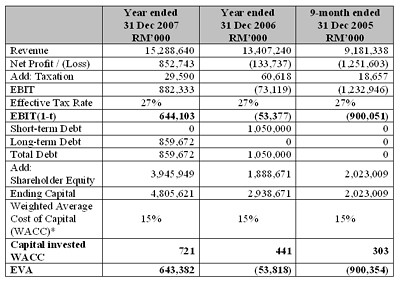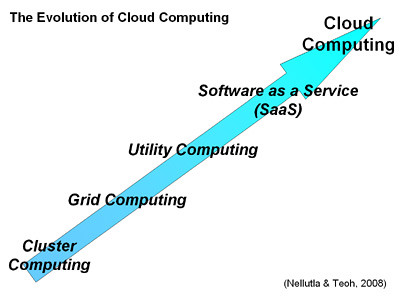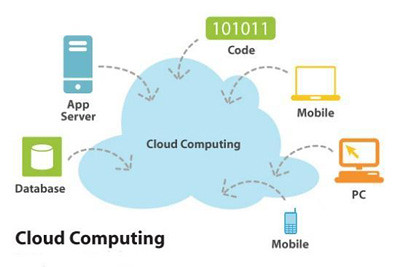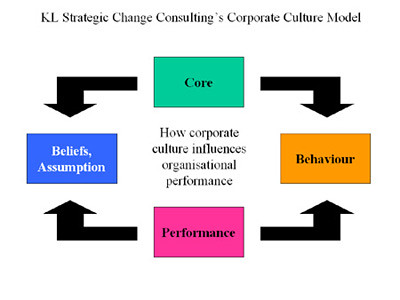ACKNOWLEDGEMENT
This article was published in the July-Sept 2009 (Vol. 44, No. 3) issue of
Management – the quarterly magazine of The Malaysian Institute of Management
Reproduced here with permission from the author Dr. Victor S. L. Tan
and from
The Malaysian Institute of Management
****************************************************************************************
Too many organisations go about the wrong way in creating corporate culture change. That probably explains why many corporate culture change initiatives fail or that they cannot be sustained. And it is not too surprising that many leaders and managers are beginning to doubt whether it is possible to change corporate culture in the first place.
Corporate cultures are created by humans. Those rules whether overt or covert in terms, beliefs, thinking, feeling and behaviour are man-made and can be changed. Perhaps, the main aim of this concluding part of a series on change management is to offer change agents some valuable lessons from some of the corporate culture change efforts undertaken by various organisations. While there are many aspects and lessons that one can learn from corporate culture change work, I am taking the liberty to share here ten powerful lessons that I believe will help change agents get on the right footing.
Lesson 1: Effective corporate culture change must begin with changing mindsets
No change can be implemented without, first of all, a change in mindset. By changing mindsets, I am referring to the 5 components of mindsets: Blindspots, Assumptions, Complacency, Habits and Attitudes, more easily remembered from the acronym; B.A.C.H.A. (Source: Changing Mindsets, Victor S. L. Tan, publisher: Times International). Changing mindsets is about uncovering blindspots with regard to areas for improvement. It is about questioning assumptions of thinking, behaviour and practices that are no longer relevant or useful. It is about reducing complacency in the workplace to increase innovation, productivity and performance. Changing mindsets is about eliminating unproductive habits or work practices that do not add value to the individual or the organisation. It is about inculcating a positive attitude towards oneself, work, people, the management and the organisation as a whole.
With mindset change, one is then aware of the need to change the policies, procedures and practices accordingly. In one of our client engagements with a conglomerate in Indonesia, the culture change began with a mindset change from the top management and then cascaded down to the lower level staff. This has proved to be an effective approach to pave the way for a start of the change process as the whole organisation had been engaged in old thinking and outdated ways of managing for the last 20 years in operation. The uncovering of the blindspots and the constant questioning of assumptions helped reduce the level of complacency of the leaders and executives. This resulted in the abandoning of unproductive work practices in the workplace and overall, a more positive attitude of people towards one another, towards their respective departments, their work and the organisation as a whole.
Lesson 2: Successful organisations have corporate culture aligned to their vision, mission, strategies, goals and their environment
It is generally agreed that the purpose of corporate culture is to develop an internal environment that is conducive for people to perform effectively.
However, a corporate culture will only be relevant and useful if it is aligned to the organisation's vision, mission, strategies, goals and the external environment it operates in. What this implies is that an organisation must first get its vision and mission right before deciding on the desired corporate culture. Of course, having determined the right vision and mission, it can then formulate the relevant goals and strategies. In the case of Jaguar Cars, a luxury car manufacturer, in the 80s, the culture change led by Chairman and Managing Director, John Egan focused on aligning the culture towards the new mission for Jaguar "to become the finest car company in the world". A new set of beliefs and core values on growth, quality, market sensitivity, learning and human development, and professionalism was developed, encouraged and practised in the workplace to enable Jaguar to produce world-class luxury cars. With the new culture, what followed was an impressive turnaround of Jaguar, with a huge jump in turnover, profitability and productivity.
The reason why determining the corporate culture needs to take into consideration the environment is because the nature of the industry or the type of business often dictates certain ways of doing things to enable it to compete or stay successful. For example, in the IT industry, the speed of response is a critical factor in doing business. In financial services, integrity is an important value to win the trust of customers.
Lesson 3: To achieve credibility and win the commitment of people, policies, procedures and practices must be consistent with the new culture
Consistency is an important factor in gaining the credibility for any change programme. Saying one thing and doing another thing is the surest way of losing credibility. Once a new culture is identified and the desired core values and behaviour communicated to employees, it is important to simultaneously change the existing policies, procedures and practices in the workplace to align to the new culture. Thus, for example if a new culture promotes openness, it is important to share information and disseminate relevant information freely and openly based on needs rather than hierarchy.
In the case of the culture change initiated by Ciba-Geigy where it strived to reduce its impact on the environment and pay more attention to employee concerns, the leaders started to change their policies and practices to align to the new culture. The company disposed of its photographic film business and reorganised itself to make decentralisation and autonomy a reality. It also conducted massive training to develop leadership and entrepreneurial qualities among its employees.
Lesson 4: To get a buy-in of corporate culture change requires a strong rationale
It is true that most cases of culture change take a lot of effort and time to overcome resistance. An effective way to overcome resistance is to provide a strong, compelling and sound rationale for the culture change. From our experience, such a rationale must often incorporate not just what is good for the organisation but also for individuals. Thus for example, an organisation which is promoting a performance-oriented culture should not just stress on the benefits of increasing productivity and performance to enable the company to compete and survive. It should also stress that by developing such a culture, it would also enhance the competency of individuals, help them develop a performance track record and increase their market value in terms of knowledge, skills and experience. It should also communicate to the staff that such a culture would also add meaning to their work and bring about personal satisfaction in the process.
Lesson 5: To ensure company-wide culture assimilation, culture change programmes should utilise the various culture transmission mechanisms available
To succeed in culture change, there must be prevalent practices of behaviour that reflect the new culture. Thus to ensure company-wide internalisation of the new culture, an organisation should utilise every channel of communication and every opportune occasion to promote and communicate the new belief system, core values and desired patterns of behaviour to every level of staff from the top right down to the lowest level of organisational hierarchy. Companies should use formal and informal channels of communication to influence and educate others on the new culture. Just like in advertisement, the publicity blitz should be frequent, focused and impactful to achieve maximum results.
Lesson 6: Achieving deep and sustainable culture change requires the participative approach
Culture change is by nature a deep and fundamental change. Such a change requires not just opening up minds but also touching hearts. People must really not just think it but they must really feel it before they behave in accordance to the desired culture. The way to achieve sustainable culture change is to first have people want to practise the new culture rather than being forced to do things in a certain way. A good way to do this is by highlighting the aspect of the culture that shows care for people. Thus showing how the practice of the new culture will enhance respect between one another, create a more enjoyable workplace and increase the competency and value of individuals speaks well of the care the organisation has for its people. As the saying goes, "People do not care how much you know until they know how much you care". Showing care certainly goes beyond opening one's mind; it certainly touches the heart.
Another good way of developing sustainable culture change is to get people's involvement. Involvement can come in many ways. It could be involvement through their input and suggestions on how they would translate certain core values into practice in their daily tasks. Or it could be soliciting their suggestions on how they could promote the practice of respecting one another in the workplace. Other ways of involvement could be through culture promotion activities such as a slogan competition to come up with a theme for launching the core values of the new culture. One of the organisations we worked with had come up with an essay writing competition on topics such as "How I Can Help Promote the New Corporate Culture in My Organisation" for individuals as well as for group categories. In the process of discussing amongst themselves and writing the essays, employees began to understand a little bit more of the new culture and began to see the value of the new culture, and subsequently began to want to assimilate the desired patterns of behaviour in the workplace.
Lesson 7: Top management commitment is essential to the success of culture change
The success of culture change requires company-wide acceptance. A limited change in the way of thinking and working within a small unit or department does not constitute a culture change in organisation. To have company-wide practice of a new corporate culture requires the commitment of top management. Commitment here refers to not only the initial launching but the continued support and follow-through. Support is needed to change policies and systems to align to the new culture.
In the case of British Airways (BA), a major culture change was instituted with full top management support, when the then Thatcher government decided to convert BA from government ownership to private ownership. The Chairman, Lord King and CEO, Colin Marshall provided the support to the change in organisation structures, systems and policies. In fact, the company's top management approved the change to a new performance appraisal system and compensation system which put greater emphasis on improving customer service and being market-driven. Colin Marshall's unwavering commitment was demonstrated by his personal presence in question-and-answer sessions at a series of training programmes on "Managing People First" and "Leading The Service Business" for senior and middle managers.
Lesson 8: To speed up culture change, leverage on “Opinion Leaders”
Every resource is needed to help speed up the culture change process. A good way to tap into the organisation's resources is to seek out "opinion leaders" to assist in promoting the new culture. Opinion leaders can be formal or informal leaders whose opinions matter to others. Often these leaders have people who look up to them and listen to what they say and do what they say. Thus, it will make sense to first convince these opinion leaders and then involve them as change agents and as role models to help spread the new culture within the organisation.
Lesson 9: Create a powerful dream of the new culture
Every great achievement starts with a powerful dream. There is a compelling force of change in creating a powerful dream. And great changes come from powerful dreams. Martin Luther King had a powerful dream in the 60s when he said, "I have a dream that one day on the red hills of Georgia, the sons of former slaves and the sons of former slave owners will be able to sit down together at the table of brotherhood". Christopher Columbus had a powerful dream of sailing across a shorter East-West trade route. Mahatma Gandhi had a powerful dream to lead his country to independence from the British. John F. Kennedy had a powerful dream of landing man on moon. Likewise, it is important to create a powerful dream of the new culture an organisation wants to develop. It should come across as exciting, inspiring and worthwhile for everybody in the organisation.
Lesson 10: Recognise and reinforce change success early and frequently
A culture change is on ongoing process and may take a long time to see tangible results. Too often leaders wait too long before they start to recognise, reward or reinforce the motivation of people in the process of implementing culture change. If the wait is too long, people will run out of stamina, their interest will simmer down and the assimilation process will come to a halt. It is thus important to look out for "early wins" and "small wins" along the way of culture change implementation, and recognise and reward people to ensure they stay motivated. In one of our culture change engagements, for example, a celebration was held when the organisation came to a consensus on the defined core values. There was further recognition of the roles of the people involved when the new culture was launched. And every success, no matter how small was highlighted early in the process and was recognised, celebrated and rewarded.
Rewards need not be merely monetary. It can come in the form of a commendation letter recognising a particular team in recruiting the most number of change agents, or a public announcement during a family day outing where individuals are singled out for being effective role models in leading their team effectively. It is the culmination of all these small positive gestures and steps taken on a continuous and relentless fashion that ultimately lead to a culture transformation for the organisation.
Written by Dr. Victor S. L. Tan. Dr. Tan is an international authority on change management and the CEO of KL Strategic Change Consulting Group (www.klscc.com) specialising in strategic change and corporate culture. He is the author of six management books including his latest book, The Secret of Change. The author may be contacted at +603 – 9074 1129 or victorsltan@klscc.com




